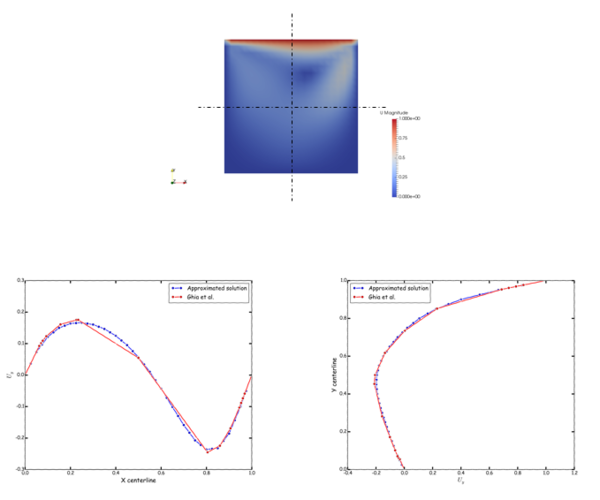Difference between revisions of "Compressible flows by Joel Guerrero"
Jump to navigation
Jump to search
| Line 12: | Line 12: | ||
[[File:joegi_f11.png|600px|right|tut1]] | [[File:joegi_f11.png|600px|right|tut1]] | ||
| − | In this [http://www.wolfdynamics.com/wiki/tut_2D_supersonic_wedge.pdf tutorial], we | + | In this [http://www.wolfdynamics.com/wiki/tut_2D_supersonic_wedge.pdf tutorial], we simulate a supersonic flow past a wedge. The inlet Mach number is 3, and the wedge angle is 20 degrees. You will learn about, |
| − | * | + | * Running compressible flow simulations. |
| − | * | + | * Running supersonic flow simulations. |
| − | * | + | * Setting the thermophysical properties for the working fluid. |
| − | + | * Setting a robust numeric for compressible-supersonic flow simulations. | |
| − | + | * Using pseudo-transient solvers. | |
| − | * | + | * Computing the Mach number. |
| − | * | + | * Capturing shock waves. |
| − | * | ||
| − | * | ||
* Sampling and plotting | * Sampling and plotting | ||
Revision as of 00:37, 19 August 2019
- contributor: Joel Guerrero
- affiliation: Universita degli Studi di Genova, Wolf Dynamics
- contact: click here for email address
- OpenFOAM version: 7
- published under: CC BY-SA license (creative commons licenses)
Supersonic flow past a wedge - Shock waves
In this tutorial, we simulate a supersonic flow past a wedge. The inlet Mach number is 3, and the wedge angle is 20 degrees. You will learn about,
- Running compressible flow simulations.
- Running supersonic flow simulations.
- Setting the thermophysical properties for the working fluid.
- Setting a robust numeric for compressible-supersonic flow simulations.
- Using pseudo-transient solvers.
- Computing the Mach number.
- Capturing shock waves.
- Sampling and plotting
You can download the case files in this link.
Go back to the contributions page.
